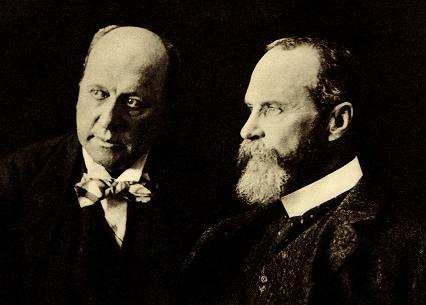"A long cool look at budget deficits
Published: April 16 2009 22:04 | Last updated: April 16 2009 22:04
The year 1992 was the last in which the Conservative party won a British election – to the surprise of most political pundits. It had some superficial similarities to the present. Public sector borrowing was on the rise and at its peak in 1993-94 reached 7.8 per cent of gross domestic product, regarded then as shockingly high.
The strategy of Norman Lamont, the then chancellor of the exchequer, was a parody of St Augustine’s “Let me be chaste but not yet”. He began a series of phased tax increases and spending curbs which were to take place over three years and thus ensured long- term fiscal prudence while avoiding depressing the economy during a recession. His successors, Kenneth Clarke and Gordon Brown (then in his prudent phase) continued that policy so that in 2000 there was a public sector net repayment of 1.9 per cent of GDP.
Could the tactic be repeated this time round? The magnitudes are much larger. The Institute for Fiscal Studies expects the annual “baseline” deficit to average £150bn over the next three years, equivalent to about 10 per cent of GDP. The IFS predicts the debt-to-GDP ratio will climb to more than 70 per cent of GDP by the middle of the next decade, excluding support for banks, compared with Mr Brown’s original objective of 40 per cent.
The Centre for Economics and Business Research expects the deficit to peak at £213bn in 2010 or about 15 per cent of GDP, and the debt ratio to exceed 100 per cent two years later. The chancellor’s own headline projections may not be directly comparable, as they are likely to take into account policy moves.
In fact, the debt ratio has historically been much higher – more than 200 per cent after the Napoleonic wars and again after the second world war – without the disasters predicted by prophets of doom. These prophets may point to the current Irish crisis as a contrary example.
This ignores the fact that 80 per cent of the Irish national debt is held by international investors, compared with 30-40 per cent in the case of the UK and the US. Moreover, Ireland has the disadvantage of being tied into the eurozone at a fixed exchange rate that was initially too low and is now too high.
Of course, it would have been much better if the UK could have entered the recession with much lower initial deficit and borrowing ratios – if only because the financial markets do not understand the very good arguments for fiscal deficits in depressed times. It is childish just to blame Gordon Brown. Economic forecasts are not made by the chancellor personally and the Treasury’s fiscal assumptions are endorsed by the National Audit Office.
These bodies are not free to write fiction. At a rough guess, I would put a third of the blame on an over-optimistic assessment of the underlying growth rate and amount of spare capacity in the economy, a third on an over-estimate of financial sector profits and perhaps a third on over-optimism by Mr Brown himself.
What fundamentally is wrong with a budget deficit? The basic argument is that if borrowing is too high the government can get into a debt trap, having to borrow more and more simply to pay the interest on past borrowings. Estimates of the safety limit tend towards an annual deficit of 3 per cent of GDP – the limit that is incorporated in the eurozone’s growth and stability pact.
Such calculations were perfectly all right before the credit crunch, when booms and busts were fluctuations around a given trend. Keynes in his General Theory maintained however that the propensity to save was much greater than the private propensity to invest, not just at the bottom of a recession but more or less permanently – a state known as secular stagnation.
This seemed plausible in the 1930s but was belied by events in the half century or so after the second world war. We could easily have a good few years in which secular stagnation might seem to prevail again, if only because of the near destruction of the world financial system. If we are in such a state then an attempt to adhere rigidly to a fiscal rule could lead to a permanent and unnecessary loss of output outweighing any welfare loss from the debt trap risk itself.
I have sympathy with those economists who favour a mainly monetary approach to sustaining demand. But I fear that the present dangers are great enough to require a belt and braces – monetary and fiscal – approach. I go back to an early suggestion of Milton Friedman that I disinterred in response to December’s pre-Budget stimulus.
The suggestion was that tax rates should be set to balance government spending at a hypothetical level of national income corresponding to “reasonably full employment at a pre-determined price level”. What this is cannot be estimated until the world and UK economies have settled down after the present turmoil.
But the beauty of the suggestion is that, should the economy go back to a recognisable trend growth rate, then the budget would automatically achieve the target balance. Yet should there really be secular stagnation then deficits would run on as long as necessary. Of course, a lot of work would need to be done to adapt Friedman’s suggestion to modern conditions, but this would be immensely more worthwhile than the hazardous projections we are likely to see in the Budget Red Book.
‘A framework for economic stability’
By Samuel Brittan
Published: December 4 2008 20:21 | Last updated: December 4 2008 20:21
The reduction to 2 per cent and 2.5 per cent of the Bank of England’s and European Central Bank’s respective official interest rates may be historically unprecedented, but it is the least the two central banks could have got away with. Their measured step-by-step approach falls below the level of events and makes me wish that the US Federal Reserve were in charge of policy on the European side of the Atlantic as well.
The Bank’s continued reluctance to resort to extreme measures makes it all the more unfortunate that the November 24 pre-Budget report turned out, at best, a damp squib and, at worst, counterproductive. Little of the discussion was on the fiscal stimulus but rather on the subsequent tax increases required “to pay for it”. If an old-school economist had deliberately tried to arrange a demonstration against fiscal policy, he could hardly have done better.
It did not help that vetoed proposals to announce an 18.5 per cent or even 20 per cent value added tax at some future date leaked out. Nor was the smallness of the immediate VAT cut – from 17.5 per cent to 15 per cent – a brilliant idea. Having decided to risk being hanged, why not for a sheep instead of for a lamb? If VAT had been cut to, say, 12.5 per cent, it would have been far more difficult for populists to dismiss it as a small factor among the many other influences affecting prices in the shops. Can Gordon Brown really have feared the European Commission?
The most important error, however, was to take too seriously the voices clamouring for a re-entry path to sound finance once the recession is over. Hence the projections showing a return to current budget balance by 2015-16. Hence, too, the assumption of a sharp but short-lived V-shaped recession. Thinking about alternatives led me to re-read a 1948 paper by Milton Friedman entitled A Monetary and Fiscal Framework for Economic Stability, reprinted in Essays in Positive Economics (1953).
I found this early essay much more helpful than his better-known later proposal for a constant growth of the money supply. The 1948 paper contained four proposals:
First, a long-term policy of determining government expenditure on goods and services, either in money or real terms, entirely on the basis of the community’s desire and willingness to pay for such services.
Second, a predetermined programme of transfer payments for items such as pensions and unemployment pay. “Such payments will be high when unemployment is high and low when unemployment is low.”
Third, a progressive tax system primarily based on the personal income tax. The rates set should be sufficient to balance government spending at a hypothetical level of national income corresponding to “reasonably full employment at a predetermined price level”.
Fourth, budget deficits would be financed entirely by the creation of money by the Fed and surpluses used to retire money. This would best be accomplished by adopting the 100 per cent reserve proposal for banks, “thereby separating the depositary from the lending functions of the banking system”.
The first three proposals look at first sight like the “automatic stabilisers” that governments came to rely on as the main fiscal contribution to economic stability before the present emergency. But there is a crucial difference. In a recession, governments would not have to forecast the path of recovery, as the British government has done, or the timing of the return to budget balance. In a normal cycle, the return would be automatic. But, if forebodings of secular stagnation, with the desire to save at high employment levels exceeding investment opportunities, were fulfilled, then budgetary stimulants would continue as long as necessary.
The banking and monetary side might appear novel. Friedman regards them as desirable in their own right. In this context, they have the advantage of making the monetary response to the business cycle automatic. But he concedes that the same results could be achieved under the present fractional reserve system by appropriate monetary policy rules.
Clearly much work would be required to adapt the Friedman framework to today’s institutional structures. In any case, it would not make sense to stake out a public expenditure path and corresponding tax rates until we have a better idea of the sustainable employment level (or output gap) likely to emerge from the present turmoil and also the new trend growth rate. But it is not too early to start preparing.
Postscript. Those alarmed by UK official projections showing public sector net debt climbing from 36 per cent of gross domestic product last year to 57 per cent in 2012 should bone up on their history. There are long passages in Macaulay showing how the nation prospered despite increases in the national debt – regarded by sages as catastrophic. In his one and only Budget speech, Harold Macmillan noted how the national debt had risen from £600m in 1914 to £8.4bn in 1939 and £27bn in 1956 – representing 27, 133 and 146 per cent of GDP. As Macmillan put it: “Whatever the temporary difficulties from trying to run too fast, if we stand still, we are lost.”
More columns at www.ft.com/samuelbrittan"







































No comments:
Post a Comment